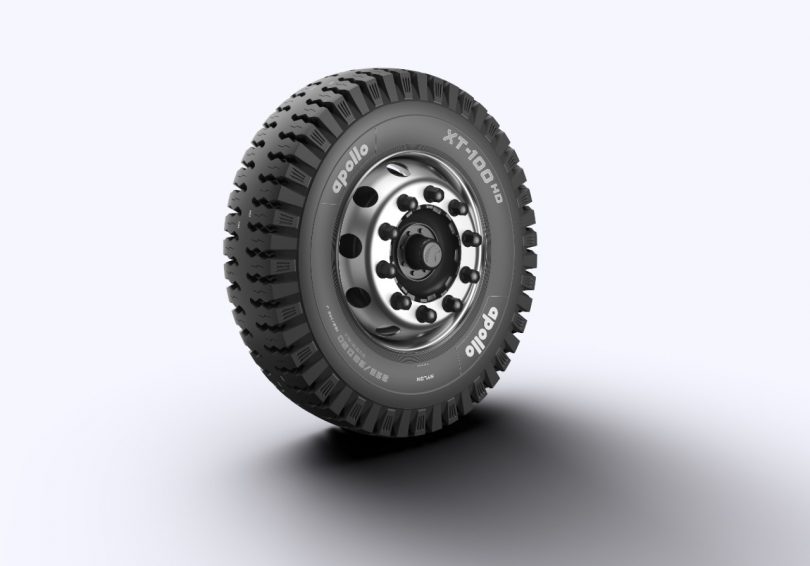The most advanced cross-ply lug tyre as claimed by Apollo, the XT-100HD has been launched. Designed and developed keeping in mind the Indian road conditions, Apollo says it offers the best of both the worlds. It offers both high load carrying capacity and returns a better mileage than the competition products. Manufactured at the Apollo facility located in the district of Vadodara, in Gujarat; it has been tested to its full potential in the neighboring states of Rajasthan, Madhya Pradesh and Andra Pradesh. Apollo tyres were very confident of the product and said these tyres’ results were remarkably better than what the competition offers.
As far the market share is concerned, it is still at 50:50 between cross-ply and radial tyres. Apollo has leveraged the technological benefit and came up with a product which is capable to carry high loads and be more efficient as well. The new high strength nylon fabric is used along with a heavy-duty casting which offers best in segment high loading capacities. The key technology used is the new heat ageing resistant compound and tyre cavity (HEART) technology which offers the best residual casing in retreadability alongside withstanding all applications and ensures cooler running of tyres in excessive usage in the long run.
Particularly the tread pattern is designed using the MMT (Modular Matrix Tread) an Apollo developed technology which improves the mileage to a great extend. The key elements in this technology are the reinforced compounds and high tread rubber mass.
If you are wondering how exactly are cross-ply different from radial tyres, then the main difference is cross-ply are cheaper to produce and have a higher resistance to the sidewall damage. These give cross-ply an edge in the commercial market whereas we see radial tyres mostly in private vehicles as they have less heat generation at high speed, improved driving comfort because of flexible sidewalls and return a better fuel efficiency as compared to cross-ply.


